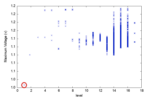Improved profitability and competitiveness are at the very heart of every enterprise. Achievements like this are usually attributed to corporate culture. Sometimes, it’s just being in the right place at the right time. Some organizations make huge investments with top-tier consulting companies to help find their way.
Recently… Read More








